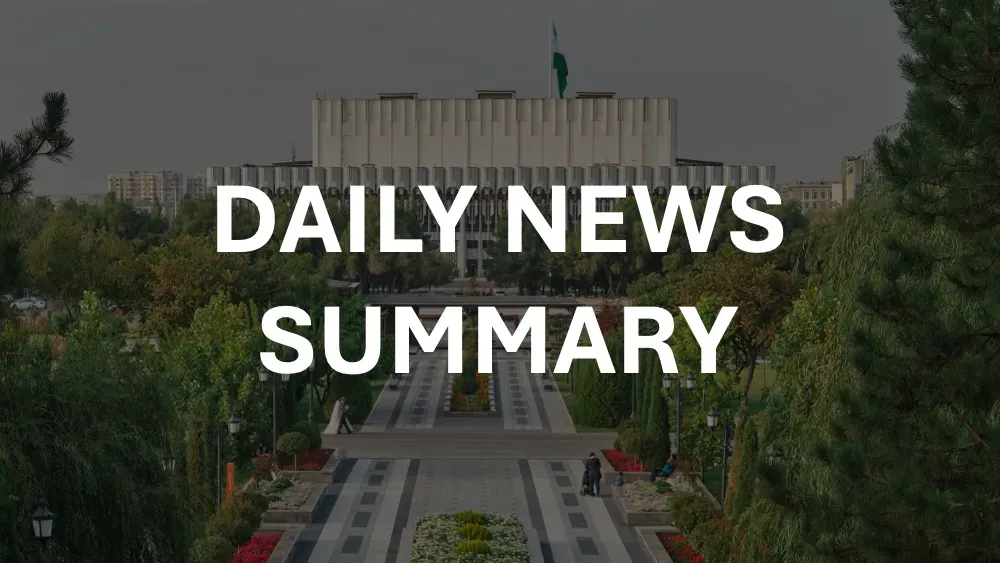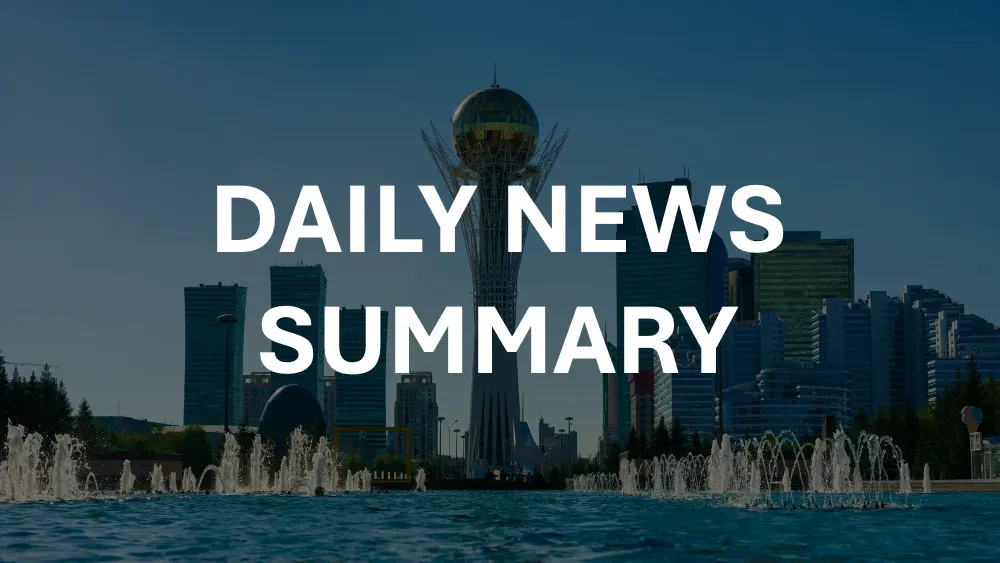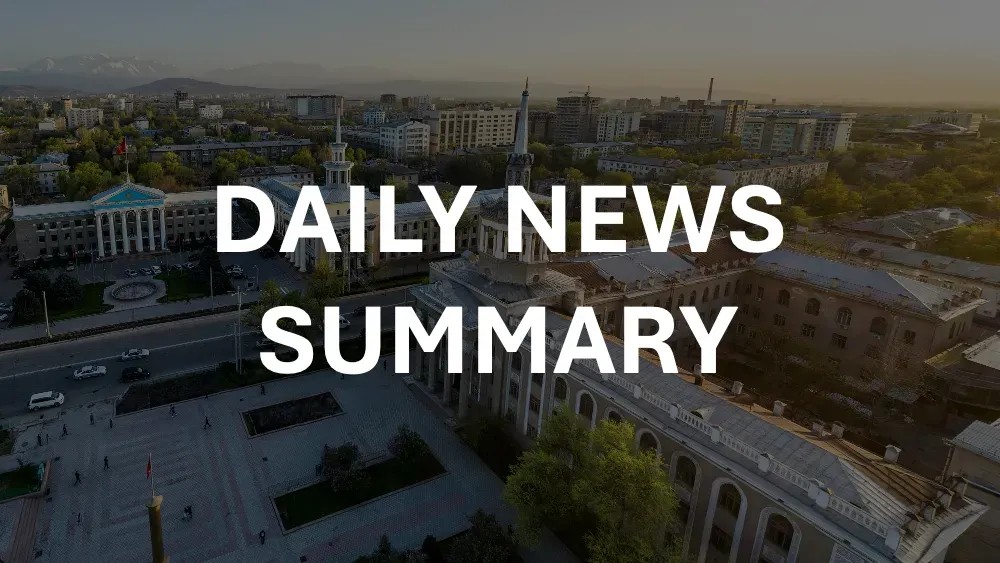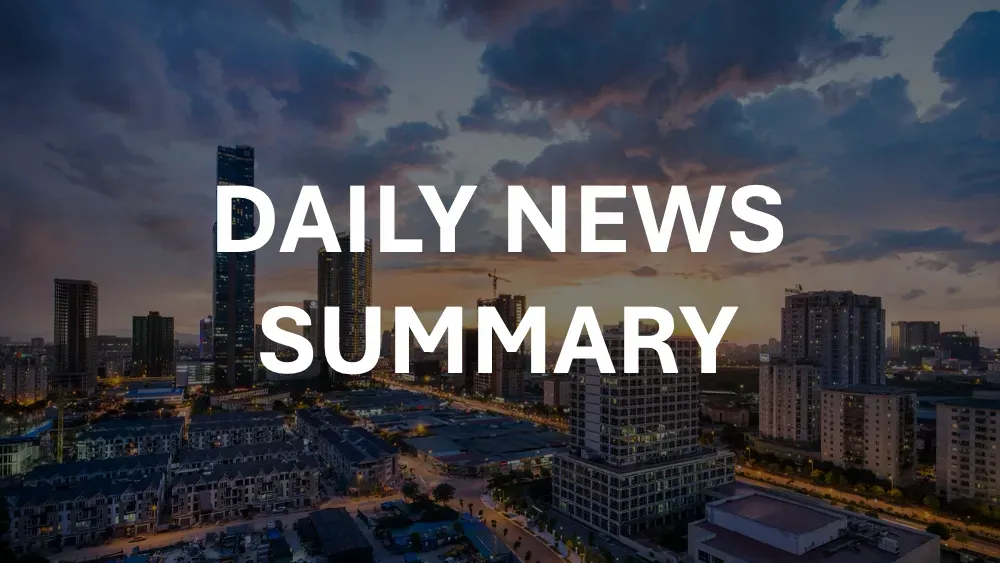📍 Get daily intelligence from Uzbekistan and Central Asia. Lexica News delivers local news that shapes global decisions—synthesized from local sources international media misses.
President Shavkat Mirziyoyev's constitutional reforms represent a calculated transformation from reformist leader to consolidated authoritarian ruler. Since taking office in 2016, Mirziyoyev has evolved from implementing economic liberalization to extending presidential power through constitutional manipulation, culminating in potential rule until 2040. The constitutional referendum of April 2023, approved by 90.21% of voters with 84.54% turnout, fundamentally reset presidential term limits and extended terms from five to seven years.
This longitudinal analysis documents how Uzbekistan's governance transformed from post-Karimov liberalization to systematic power consolidation, revealing patterns that international professionals must understand for political risk assessment and long-term investment planning in Central Asia's most populous nation.
Baseline Documentation: The 2016 Starting Point
When Mirziyoyev assumed power in September 2016 following Islam Karimov's death, Uzbekistan exhibited characteristics of a highly repressive authoritarian state with limited economic openness. The constitutional framework inherited from the Karimov era established five-year presidential terms with a maximum of two consecutive terms, theoretically requiring Mirziyoyev to step down by 2026.
The initial institutional landscape showed concentrated executive power with virtually no opposition parties, controlled media, and a rubber-stamp legislature. Economic indicators revealed extensive state control with forced labor practices affecting over two million citizens annually, particularly in cotton harvesting. Foreign investment remained minimal due to currency controls and regulatory opacity.
Regional observers documented Mirziyoyev's early positioning as a reformer, implementing aggressive policy transformations to invigorate civil society. This initial reform agenda created expectations for democratic liberalization that would later clash with authoritarian consolidation objectives.
Evolution Analysis: Three Phases of Power Consolidation
Phase 1: Reform Implementation (2016-2021)
Mirziyoyev's first phase focused on economic modernization and limited political opening. Between 2018-2021, the World Bank delivered $2.1 billion across four Development Policy Operations to support reform efforts, demonstrating international confidence in the reform trajectory.
Key transformations included eliminating forced and child labor practices, liberalizing currency exchange, and accelerating private sector growth. The number of new business registrations nearly tripled from under 33,000 in 2016 to 93,000 in 2022. Foreign policy pivoted toward regional cooperation through a "Central Asia First" strategy.
However, political institutions remained unchanged. The October 2021 presidential elections, where Mirziyoyev secured re-election, were assessed as neither free nor fair by international observers, indicating continuity in authoritarian governance despite economic reforms.
Phase 2: Constitutional Preparation (2022-Early 2023)
The critical inflection point began in spring 2022 when authorities initiated constitutional amendment processes. Initial drafts proposed removing Karakalpakstan's autonomous status, triggering the most significant domestic unrest of Mirziyoyev's presidency in July 2022, resulting in 18 deaths and over 200 wounded.
This crisis revealed regime vulnerability and influenced subsequent constitutional drafting. The final referendum version maintained Karakalpakstan's status while incorporating presidential term extensions. The proposed reforms affected 65% of the existing constitution, expanding from 128 to 155 articles and increasing provisions from 275 to 434.
International observers noted the lack of genuine debate during this preparation phase, with the OSCE characterizing the process as lacking political pluralism. Opposition voices remained marginalized throughout constitutional discussions.
Phase 3: Power Consolidation (2023-Present)
The April 2023 constitutional referendum marked definitive authoritarian consolidation. Official results showed 90.21% approval with 84.54% turnout, allowing Mirziyoyev to reset his term count while extending presidential terms to seven years. This constitutional manipulation potentially extends his rule until 2040.
Post-referendum developments accelerated power concentration. In June 2024, Mirziyoyev appointed his eldest daughter Saida Mirziyoyeva as head of the presidential administration, recreating a position abolished in 2023. This nepotistic appointment parallels authoritarian dynasties in Azerbaijan and Turkmenistan.
Parliamentary elections in October 2024 demonstrated continued authoritarian control, with all five participating parties remaining loyal to the government. International observers characterized the political environment as constrained, providing voters no genuine choice.
Understand Uzbekistan Like an Insider
This analysis draws from extensive research, but the story continues to evolve daily. Lexica synthesizes breaking developments from dozens of Uzbek news sources—from mining policy changes to local protests that never make international headlines.
Our daily intelligence briefs help executives, diplomats, and researchers track:
- Regulatory shifts affecting foreign investment
- Local opposition to development projects before they escalate
- Market dynamics that signal opportunity or risk
- Political developments that reshape the business landscape
Pattern Analysis: Authoritarian Modernization Strategy
Three consistent patterns emerge from Mirziyoyev's governance evolution. First, economic liberalization preceded political consolidation, using reform credentials to legitimize subsequent authoritarian measures. Research demonstrates this "authoritarian modernization" approach prioritizes economic growth while maintaining political control.
Second, constitutional manipulation serves as the primary consolidation mechanism. Following patterns established by Vladimir Putin and other post-Soviet leaders, Mirziyoyev reset term limits through referendum rather than democratic transition. This technique allows legal power extension while maintaining constitutional legitimacy.
Third, crisis management shapes authoritarian adaptation. The 2022 Karakalpakstan unrest influenced constitutional drafting, demonstrating regime responsiveness to domestic pressure while maintaining core power objectives. Family appointments following constitutional changes suggest succession planning within authoritarian frameworks.
Regional analysis shows Uzbekistan following broader Central Asian patterns. All five Central Asian states are classified as "consolidated authoritarian regimes" by Freedom House's 2024 assessment, with Kazakhstan, Kyrgyzstan, and Uzbekistan all registering rule-of-law declines in 2023.
Current Trajectory: Institutionalized Authoritarianism
Present governance indicators suggest consolidated authoritarian rule through 2040. Freedom House's 2024 Nations in Transit report documents Uzbekistan's continued classification as a consolidated authoritarian regime, with no opposition parties operating legally and all power concentrated in the executive branch.
Recent family appointments indicate dynasty-building similar to other regional autocracies. Saida Mirziyoyeva's elevation to presidential administration head positions her as potential successor, while appointments of other family members to government positions suggest systematic nepotism.
Economic reforms continue alongside political consolidation, with infrastructure investment programs exceeding $55.4 billion under the National Development Strategy 2030. This dual approach maintains international engagement while strengthening domestic control mechanisms.
International observers monitor several trajectory indicators: family succession preparations, opposition party treatment, media freedom restrictions, and constitutional amendment frequency. Current patterns suggest stagnation in democratic progress with continued authoritarian resilience.
Conclusion: From Reform to Dynastic Consolidation
Mirziyoyev's eight-year tenure demonstrates how economic modernization can coexist with political authoritarianism. The constitutional referendum of 2023 represents the decisive inflection point, transforming potential democratic transition into systematic power consolidation extending through 2040.
Key transformation drivers include regional authoritarian stability, international focus on economic rather than political reform, and domestic acceptance of economic improvements over democratic progress. The Karakalpakstan crisis proved the most significant challenge to regime stability, influencing subsequent constitutional provisions.
Family appointments and succession planning indicate institutionalized dynastic rule similar to other Central Asian states. International analysis suggests Uzbekistan has joined the regional pattern of "consolidated authoritarianism" with limited prospects for democratic transition.
For international professionals conducting political risk assessments, the trajectory indicates stable authoritarian governance through 2040 with continued economic liberalization. Constitutional manipulation has legally secured Mirziyoyev's extended rule while family appointments suggest prepared succession mechanisms. Monitoring succession dynamics, economic reform sustainability, and regional authoritarian coordination will provide key indicators for long-term stability analysis.
Frequently Asked Questions
How reliable is the constitutional referendum data showing 90.21% approval?
OSCE election observers documented that the referendum lacked genuine political pluralism and meaningful opposition participation, suggesting the official approval rate reflects limited competitive debate rather than genuine democratic support. Historical patterns in authoritarian referendums typically show inflated approval percentages due to controlled information environments and limited opposition access.
What caused the biggest changes in Mirziyoyev's governance approach?
The July 2022 Karakalpakstan crisis, resulting in 18 deaths and over 200 wounded, marked the most significant domestic challenge to Mirziyoyev's rule. This unrest influenced constitutional drafting by forcing retention of regional autonomy provisions while accelerating presidential power consolidation measures. The crisis demonstrated regime vulnerability to regional unrest and shaped subsequent authoritarian adaptation strategies.
How does Uzbekistan's authoritarian consolidation compare to regional patterns?
Freedom House's 2024 assessment classified all five Central Asian states as "consolidated authoritarian regimes," with Uzbekistan following similar power extension patterns as Kazakhstan's Nazarbayev and Russia's Putin. The regional trend shows constitutional manipulation, family succession planning, and economic modernization without political liberalization across post-Soviet Central Asian states.
What factors correlate most strongly with these constitutional changes?
Three primary factors drove constitutional consolidation: economic reform success legitimizing political control, regional authoritarian stability reducing democratic pressure, and international focus on economic engagement over democratic governance. The World Bank's $2.1 billion development support demonstrates international prioritization of economic rather than political reform.
How do methodology changes in governance assessment affect comparability?
International democracy tracking organizations have maintained consistent assessment criteria, showing Uzbekistan's stagnation in democratic progress over the past five years. However, economic liberalization metrics often improve while political freedom indicators decline, requiring separate analysis of economic versus political governance trajectories for accurate risk assessment.
What external factors influenced Mirziyoyev's power consolidation timing?
Regional geopolitical competition, particularly Russia's influence in Central Asia and China's Belt and Road Initiative engagement, provided external legitimacy for authoritarian governance models. The broader pattern of "authoritarian regeneration" across Central Asia in 2023 created regional precedents for constitutional manipulation, reducing international pressure for democratic transitions.
What developments should stakeholders monitor for future trajectory assessment?
Key monitoring indicators include family succession preparations, particularly Saida Mirziyoyeva's political development, constitutional amendment frequency, opposition party treatment, and economic reform sustainability. Recent family appointments suggest systematic dynasty-building requiring continued observation of power distribution within the Mirziyoyev family circle. Regional coordination among Central Asian autocracies also provides important context for Uzbekistan's authoritarian trajectory.
Track Uzbekistan with Local Intelligence
The rare earth story exemplifies why local sources matter. While international media reports MOUs and ministerial visits, Uzbek outlets cover the community protests, water disputes, and regulatory changes that actually determine project outcomes.
Lexica delivers what you're missing:
- Daily briefs at 7AM Tashkent time covering 40 top stories from politics to economics
- Full-text synthesis from sources in Uzbek
- Searchable archive to track how today's announcements connect to yesterday's promises
- Multi-country coverage across Central Asia for regional context
Whether you're evaluating investment opportunities, monitoring supply chain risks, or analyzing geopolitical developments, local intelligence reveals what international headlines obscure.
